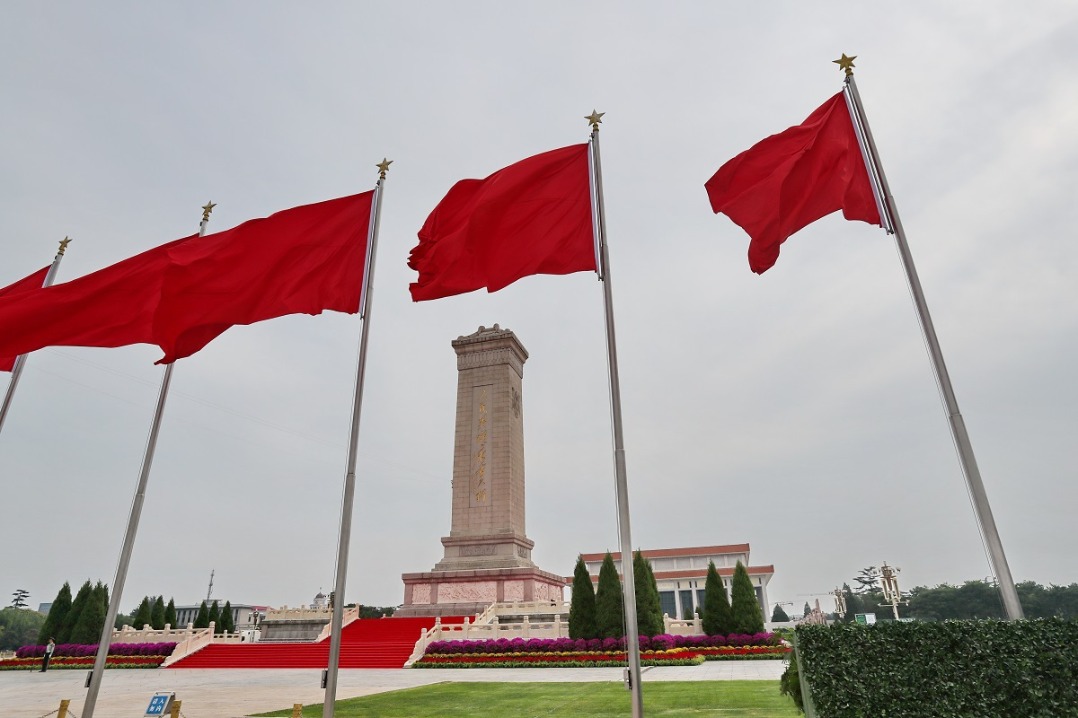Property sector critical to growth
By Liu Ligang | CHINA DAILY | Updated: 2024-01-29 09:27

The outlook for China's property sector will have a huge impact on China's growth, investment, and consumer confidence this year. In response, Beijing must make timely and decisive policy interventions when room for policy changes and policy tools are still available and effective, in order to avoid repeating a balance-sheet recession that Japan experienced between 1991 and 2013.
Since the July meeting of China's top leadership, the country has launched a series of policies covering fiscal, monetary, consumption and property sectors with an aim to sustain a post-COVID-19 economic recovery. These policies, having helped produce a 5.2 percent GDP growth for 2023, are yet to bring about strong confidence in the Chinese economy. On the one hand, the renminbi is still facing depreciation pressure; on the other, both A shares onshore and H shares offshore haven't reacted positively to the policies enacted so far.
Central to the issue is the property market. Following more than two decades of rapid growth and price appreciation, the "three-red-lines "policy package, implemented in 2020, has put an abrupt end to the model of high-leverage, rapid turnover, and high-profitability widely adopted by developers, leading to widespread defaults of the US dollar bonds issued in Hong Kong and RMB bonds onshore. Meanwhile, the demand side has also undergone drastic changes. While vacancy ratios are high in both commercial and residential properties, demographic change suggests that future demand is diminishing fast. While China's population fell by 2.08 million last year, the number of newlywed couples dropped by almost 50 percent in 2022 to below 7 million, compared with that of five years ago. Aging population and declining fertility rate all suggest shrinking housing demand.
At this stage, the property sector is still an indispensable engine of growth. Property sector contributes 20 percent of fiscal revenue, stores 70 percent of household wealth, generates 24 percent of GDP, and takes in 25 percent of bank loans. Owing to the slump experienced in the property sector, the consumer price index (CPI) inflation was only 0.2 percent in 2023, and the PPI has been in the deflationary zone for more than 20 months. If one were to use the GDP deflator to benchmark China's overall price dynamics, the economy has already entered a deflationary territory since the second quarter of last year.
Signs of balance-sheet recession loom on the horizon. The private sector, including both households and private enterprises, has started to deleverage, judging from rising household bank deposits, which amounted to around 17 trillion yuan ($2.4 trillion) and 15 trillion yuan in 2022 and 2023, respectively, and declining investment among private firms.
Falling property prices, together with significant oversupply in the urban property market, suggest the negative wealth effect will kick in, which serves to reduce income of the households and depress future consumption. This is indeed a portentous ingredient of Japan's balance-sheet recession.
Unlike Japan during its lost decades after the collapse of its property bubble, China faces its own significant structural challenges. While it is still a middle-income economy, its economic structure is very much imbalanced, with excessive investment, too much dependency on exports and insufficient domestic consumption. Debt, especially SOE and local government debt, remains quite high. The property market malaise, together with the structural imbalances, will likely inhibit China's leap over the middle-income trap.
Also different from Japan after its property bubble collapse, China faces serious external challenges. The high tariffs imposed on Chinese exports from the Trump era will continue to stay, which will lead to continuous, though gradual, relocation of supply chains, risking of hollowing out China's manufacturing base. Meanwhile, the US' "small-yard high-fence" technology policy intended against China will also prevent high-tech spillover, slowing China's technology catch-up process and its potential GDP growth on the way.
These challenges will thus require urgent and decisive policy interventions to tackle the property market downturn head-on, so as to avoid repeating the policy mistakes of Japan in its post-property bubble era.
The good news is that China still has policy room and tools, and the authorities can also learn from the lessons as well as the experiences of other countries when dealing with its property market challenges.
・ Both policy rate and the reserve requirement ratio, or money banks must hold as reserves, can be lowered more substantially. The one-year MLF(medium-term lending facility) policy interest rate is still 2.5 percent and the loan prime rate, or LPR, is 3.45 percent. As deflation risk looms, the People's Bank of China, the country's central bank, can cut interest rate by maximum 250 base points in theory. Given that the RRR for large financial institutions is at 10.5 percent, there is also a large room to lower RRR to inject a large amount of liquidity into the banking system.
・ More efforts could be made to engage in significant countercyclical fiscal policy stimulus. Given the central government debt is less than 23 percent of the GDP, compared to Japan's 221 percent and the US' 120 percent, it has huge room to issue a large amount of central government debt. The proceeds could be used to engage in much-needed soft infrastructure investment in areas like education, healthcare, research and development, and basic research with an aim to reduce precautionary savings motives and ensure long-term sustained economic growth.
・ China has the advantage of learning from the Japanese lessons. It took Bank of Japan, Japan's central bank, six years to lower its policy interest rate from 6 percent to 1 percent after the burst of the asset bubble, and then three more years to lower the policy rate to zero percent. Such policies were too little and too late, leading to solidifying of deflationary expectation. In addition, the restructuring of property bad debts had not really begun until a banking crisis took place in 1998.
・ China can also learn from the experience of the United States in dealing with the major financial crisis in 2008 and 2009. In response to these challenges, the US Fed quickly cut interest rates to zero percent and then implemented QE (quantitative easing). The US Treasury also brought into play a $700 billion Troubled Asset Relief Program (TARP) fund, allowing the government to purchase toxic assets and equity from troubled financial institutions. Such a government-led approach to restructuring troubled asset has led to a rapid divestment and restructuring of subprime mortgage assets. Given China also has four central-government and many provincially owned asset management companies, they should be given the fund and mandate to engage in rapid bad asset restructuring. Such a policy will not only ensure the completion of pre-sale houses but also anchor the expectation of housing prices.
・ Beijing can also make good use of its own institutional advantages. China still has room for further urbanization. Except for some big cities, the government can fully liberalize the household registration system to allow rural population to move to non-tier-1 cities to live without much restriction.
・ Finally, land is also in the hands of the government. In areas of property surplus, the local government can engage in land buyback, stop selling land, as well as collect and store excess real estate assets as ways to curb the negative impact of the property sector on the Chinese economy.
These policies, if taken in a timely and decisive manner, can help ensure that China will not repeat the prolonged balance-sheet recession Japan suffered in its post property bubble era.
The views do not necessarily reflect those of China Daily.
The writer is vice-president of Hong Kong Institution of International Finance. He is a former managing director and head of APAC Economic Research of Citi Global Wealth.
























